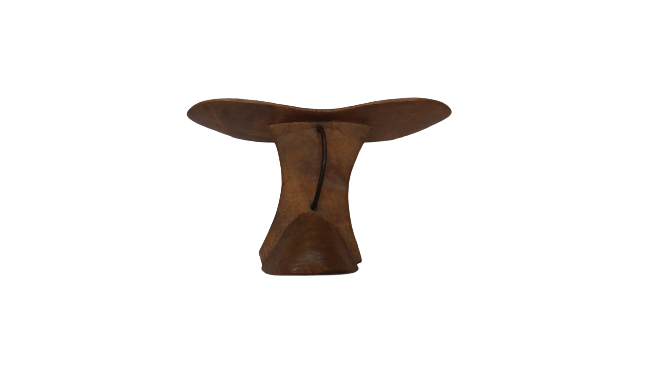
African headrests support the head by cradling it along the jawline, and lifting it from the ground. In some regions of central and southern Africa, headrests can be associated with dreaming and divination, they are practical in eastern Africa.
They protect intricately prepared hairstyles from dust or from becoming flattened. Hairstyles can take a very long time to create, and they indicate the wearer’s social status, age, rank, and gender. They can retain traces of their owners and use. For example, some headrests in museum collections have a dark sheen on the upper platform and sides, which happens because the wood becomes imbued with butter-based hair dressings and other materials used to create the hairstyle.
Men in East Africa use headrests when looking after animals at night. They are sometimes carried during the day as a sign of their status.
There is a great deal of variety of design in African headrests. Sometimes, they show the original forms of the tree trunks or branches which they were carved from. Usually, the head support is a slightly curved rectangle. The legs and decorations show the cultural style and artistry of the individual craftsperson.
Watch Natty Mark Samuels, founder of the African School, talk about our headrest here.